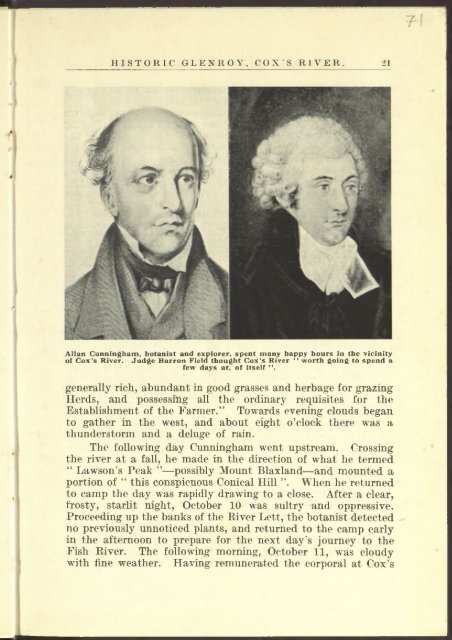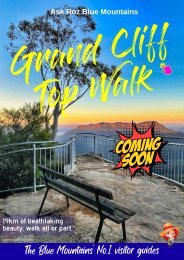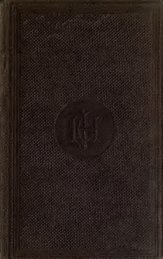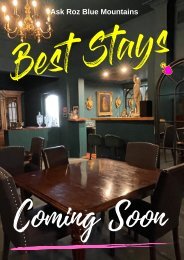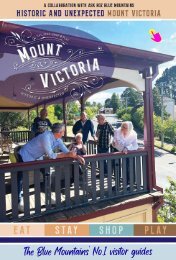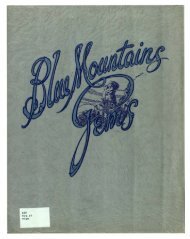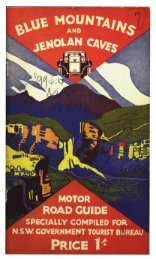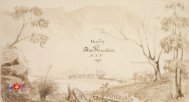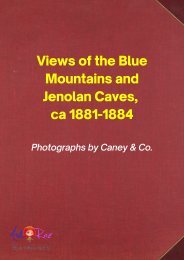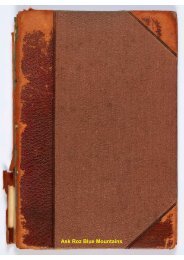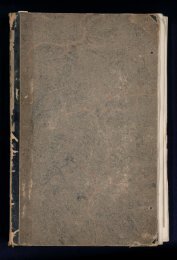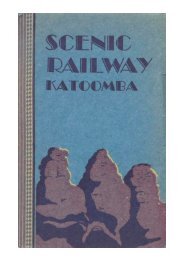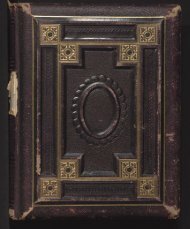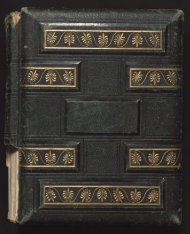Hartley Court House - 1837 to 1937
Hartley Court House - 1837 to 1937
Hartley Court House - 1837 to 1937
You also want an ePaper? Increase the reach of your titles
YUMPU automatically turns print PDFs into web optimized ePapers that Google loves.
HISTORIC GLENROY, COX’S RIVER. 17<br />
River, and the third at Bathurst. W hen these French <strong>to</strong>urists<br />
with Lawson reached Mount York it was long past nightfall,<br />
and after negotiating the headlong descent, whose depth and<br />
extent were invisible in the darkness, they found themselves at<br />
the end of a quarter of an hour in the marshy Yale of Clwydd.<br />
The solitudes were wrapped in the utter silence of the mild, still<br />
night. N ot a word was spoken as they went forward singly,<br />
the rhythmic beat of the horses’ feet the only sound that broke<br />
the religious calm. The barking of dogs at midnight and the<br />
sound of a running stream heralded the approach of the military<br />
depot on the banks of Cox’s River. Here they spent the whole<br />
of the next day <strong>to</strong> rest their horses and <strong>to</strong> wait for their<br />
impedimenta. In their exploration of the neighbourhood they<br />
soon noticed the change in the geological nature of the country,<br />
which was of granite in contrast <strong>to</strong> the sands<strong>to</strong>ne of the Blue<br />
Mountains, whose excessive dryness was succeeded b y the<br />
agreeable freshness of the valley, watered as it was by several<br />
streams. Leaving Bathurst on the morning of December 5,<br />
it was again after midnight when these Frenchmen returned <strong>to</strong><br />
the depot at Cox’s River. Everyone was astir very early the<br />
next morning and eager <strong>to</strong> view in daylight Mount Y ork and<br />
the bold pass they had descended on the last night in November.<br />
C o m m is s io n e r B ig g e f r o m L o n d o n S e e k s I n f o r m a t io n a t<br />
C ox’s R i v e r .<br />
John Thomas Bigge, sent <strong>to</strong> the colony as Commissioner<br />
of Inquiry, visited Bathurst in 1820. Evidence given on<br />
Oc<strong>to</strong>ber 7, at C ox’s River, byC orporal James Morland, showed<br />
that all men returning from Bathurst, whether Government or<br />
William C ox’s, were victualled there, the beef coming from<br />
Bathurst and the flour from the Nepean, and the carters who<br />
brought it were victualled. According <strong>to</strong> Morland, the huts<br />
were very badly put up and were in constant need of repair.<br />
The local timber was poor. He stated also that he had taken<br />
twenty-five bushrangers in all, including thirteen who had<br />
recently attacked the post at Springwood. The detachment,<br />
<strong>to</strong>talling five, was occupied in forwarding letters and guarding<br />
Government carts of provisions <strong>to</strong> Bathurst, one of which arrived<br />
every five weeks. The bushrangers were captured by surprise,<br />
and the corporal examined every passing traveller he did not<br />
happen <strong>to</strong> know. He said it was a bad cattle river in the winter<br />
but good both winter and summer for sheep. Richard Lewis


